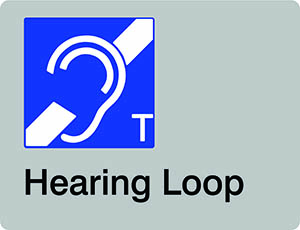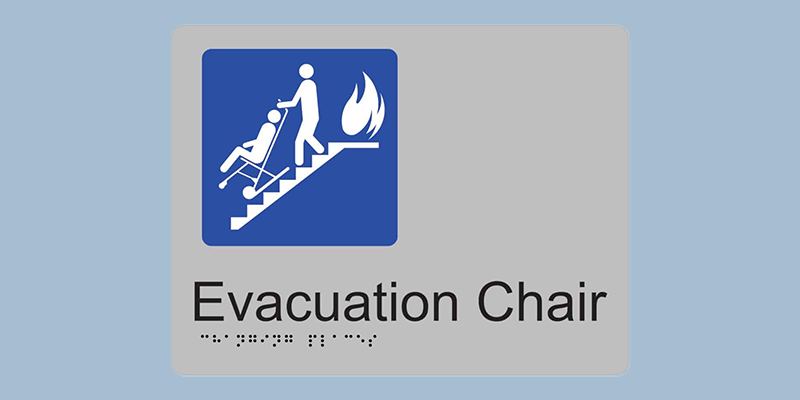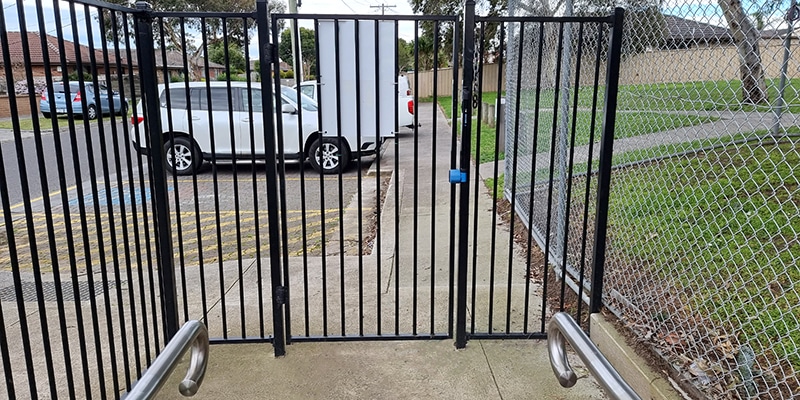
Providing effective hearing augmentation system is aimed at assisting people with a hearing impairment to access communications associated with a building’s use.
A hearing augmentation system installed under the ‘deemed-to-satisfy’ provisions of the Building Code of Australia (or BCA) will cater for people with moderate to profound hearing loss, but will not cater for all people who are deaf. For example, a hearing loop system under the BCA would be of no benefit to those people who are so deaf that a hearing aid or cochlear implant is of no use to them.
The design of a hearing augmentation system for any room or space needs to make sure that people who are hearing impaired, with moderate to profound hearing loss, are able to have communications transmitted through the inbuilt amplification system, then relayed and amplified to them through the hearing augmentation system.

Hearing augmentation signage
Hearing augmentation signage
Hearing augmentation systems must be provided where an inbuilt amplification system is provided (other than one only used for emergency warning). They are required in the following locations (BCA Clause D3.7(a) and Premises Standards Part D3.7(1) (under the Disability Discrimination Act).
Where an induction hearing loop is provided, it must cover at least 80% of the floor area of the room or space that is served by the inbuilt amplification system (BCA Clause D3.7(b)(i) and Premises Standards Part D3.7(2)(a)).
For hearing augmentation systems using audio receivers, such as Infra Red (IR) or radio frequency FM transmitter / receiver systems, the system must cover at least 95% of the floor area of the room or space served by the inbuilt system, and a minimum number of receivers must be provided in a ratio depending on the number of people who may be accommodated in the room (BCA Clause D3.7(b)(ii) and Premises Standards Part D3.7(2)(b)).
Receivers to be provided in the following ratios in each room or space served by an inbuilt amplification system (BCA Clause D3.7(b)(ii) and Premises Standards Part D3.7(2)(b)):
| No. of occupants in room or space | No. of receivers required |
| Up to 500 | 1 receiver for every 25 persons or part thereof, or 2 receivers whichever is greater |
| More than 500 persons, but not more than 1,000 persons | 20 receivers, plus 1 receiver for every 33 persons or part thereof in excess of 500 persons |
| More than 1,000 persons, but not more than 2,000 persons | 35 receivers, plus 1 receiver for every 50 persons or part thereof in excess of 1,000 persons |
| More than 2,000 persons | 55 receivers, plus 1 receiver for every 100 persons or part thereof in excess of 2,000 persons |
Clause D3.6 of the BCA and Part D3.6(a) of the Premises Standards requires Braille and tactile signage to identify a room or space with a hearing augmentation system. The signage must identify the type of system, the area covered and if any receivers are being used where the receivers can be obtained from (BCA, Clause D3.6 (b)).
The signage must also include the International Symbol of Deafness in accordance with AS1428.1.
See the Deafness Forum of Australia article for more information on signage, and examples, at
http://www.deafnessforum.org.au/publications
Although the BCA and Premises Standards includes a number prescriptive parameters for the installation of a hearing augmentation system, it unfortunately does not consider a number of critical factors, such as sound reverberation and the acoustic quality of finishes, background noise, sound source distances, volume and shape of rooms.
It is also important to consider the specific use and layout of the building to determine suitable hearing augmentation systems.
Users prefer the hearing loop system, as they do not need to identify as having a disability when collecting receivers for infrared or FM systems.
Likewise, Hearing Loop Systems are beneficial for venue operators as they do not have to allocate staff to hand out, collect and maintain receiver, including battery charging and repairs.
Given there is a wide range of different hearing augmentation systems available the decision on which type of system to use will depend on a number of factors, such as the size and use of the space, external interferences and building materials used. There is also a lot of new technology emerging in the area. Unfortunately the new technology that uses mobile phones is not suitable due to the latency between the source signal and what is heard by the phone user. The latency needs to be less than 25mS for lip reading.
When considering the suitability of an hearing loop system it is important to note that the spill-over of the signal of any induction loop system can occur for up to 10m outside the designated coverage area, unless the system is specifically design for adjacent loop operation, using low spill phased arrays..
Portable infra-red systems provide the ability to position the portable device in a direct line of sight within each room or space served by the portable infrared transmitting device and thereby reduces any potential of the spill-over or leakage of transmissions interfering with an abutting room also served by a similar system. The use of portable IR systems provides the ability to position the portable device in a direct line of sight within each room or space served by the portable infrared transmitting device and thereby reduces any potential of the spill-over or leakage of transmissions interfering with an abutting room also served by a similar system.
However, this requires high supervision, as failure to provide this system effectively then becomes a potential DDA complaint.
For this reason, infrared is recommended only for locations which require absolute confidentiality.
Conversely, the spill-over of an FM transmitting system can occur for some distance (AS1428.5, Clause 4.3.7), however, if there are different frequency zones within the FM range, this would not be a foreseeable problem and the benefit of zoning each area offsets this issue. Particularly relevant in cinemas, schools and universities.
The ability to reduce spill-over of the transmission of amplified conversations over multiple hearing augmentation systems (or adjoining levels within a building or city area, given the potential leakage range) is also assumed to be an important factor for selection given there could be sensitive discussions being undertaken within rooms, unless the system is specifically designed using low spill phased arrays.
Need more information? Contact us to learn more.
Special Thanks
Andrew Stewart, Technical Specialist from ClearaSound Pty Ltd has kindly updated this blog for us. His website is www.HearingLoops.com.au

We are often asked to assess signage against the requirements of the Disability Access to Premise...
read more
For public transport operators, accessibility and ease of use are essential to design considerations across...
read more
If you’re a parent of young children in a kinder, preschool or childcare centre or visit a maternal child health centre (MCHC), you’ll...
read moreKeep up with Disability Access Legislation using our free e-newsletter. Save yourself the headache of complaints and expensive last-minute upgrades. Sign up here!